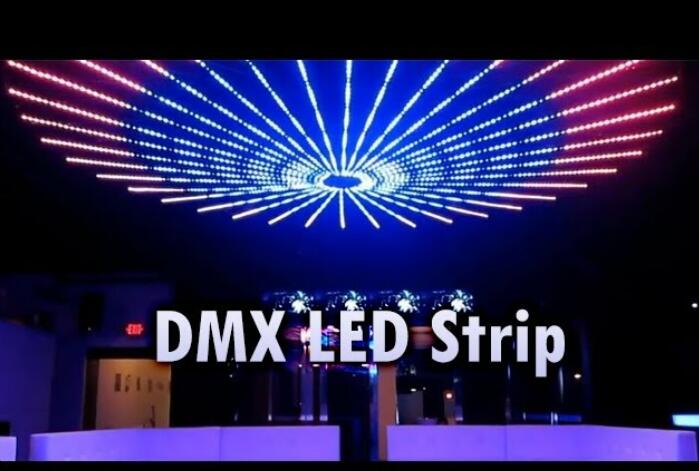Release time:Apr 12,2024View:29847
To connect LED strips to a DMX decoder, you'll need to follow these general steps:

Identify the DMX Decoder: Ensure you have a DMX decoder suitable for LED strips. It should have DMX input/output ports and terminals for connecting LED strips.
Prepare the LED Strips: If your LED strips are not pre-wired, you might need to solder wires to the contacts on the strip. Make sure the wires are of the appropriate gauge for your setup.
Power Supply: Connect the power supply to the DMX decoder. Most DMX decoders require a separate power source to operate the LED strips.
DMX Signal Connection: Connect a standard DMX cable from your DMX controller or console to the DMX input port on the DMX decoder. This cable carries the control signal to the decoder.
LED Strip Connection: Connect the LED strips to the DMX decoder. Typically, you will connect the positive (+) and negative (-) terminals of the LED strip to the corresponding terminals on the DMX decoder. Ensure polarity is observed to avoid damaging the LED strip.
Addressing: If your DMX decoder allows for individual addressing of LED segments, you may need to set the addresses for each segment according to your DMX controller's setup.
Testing: Once everything is connected, power on the system and test the LED strips using your DMX controller. Verify that the LED strips respond correctly to the control signals.
Final Adjustments: Make any necessary adjustments to the DMX decoder settings or addressing to achieve the desired lighting effects.
Always refer to the user manual provided with your specific DMX decoder and LED strips for detailed instructions and safety precautions. Additionally, ensure that all connections are secure and insulated properly to prevent electrical hazards.
Shenzhen, China 518103

